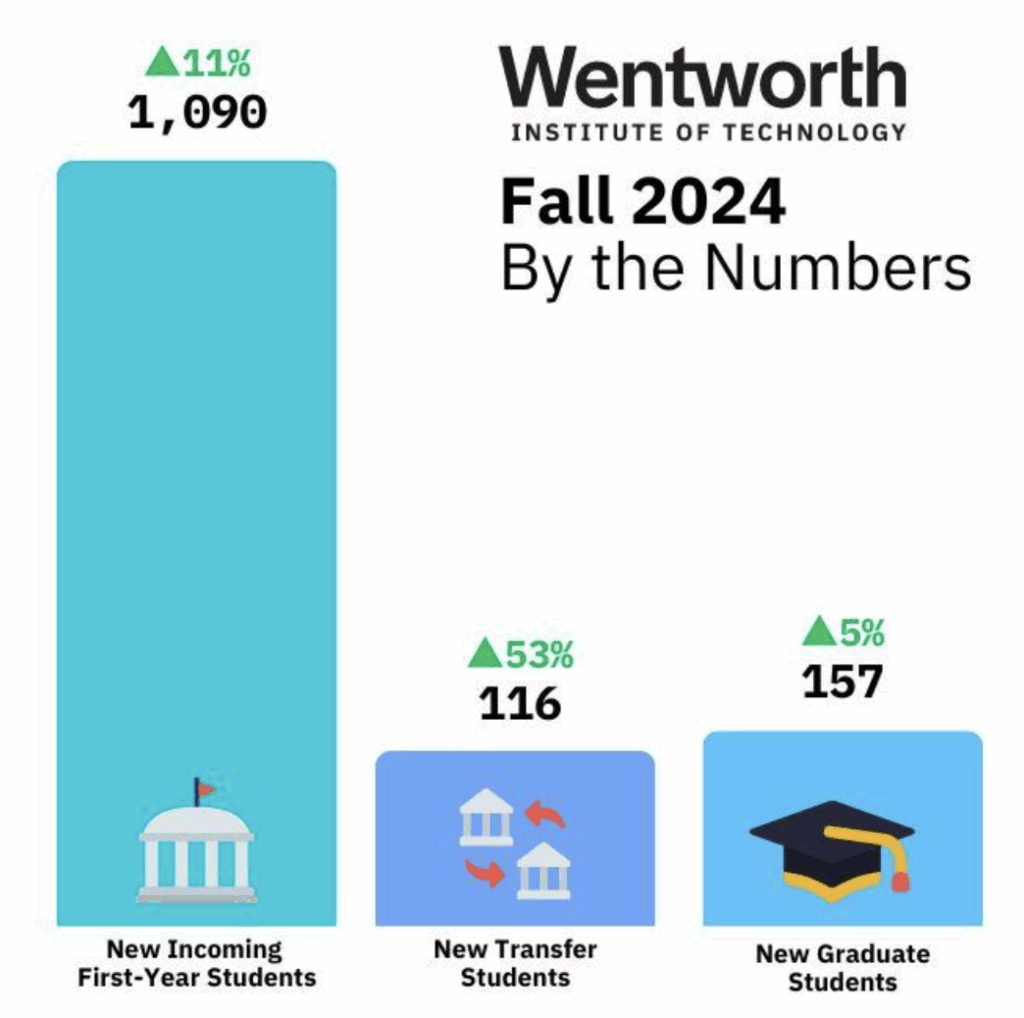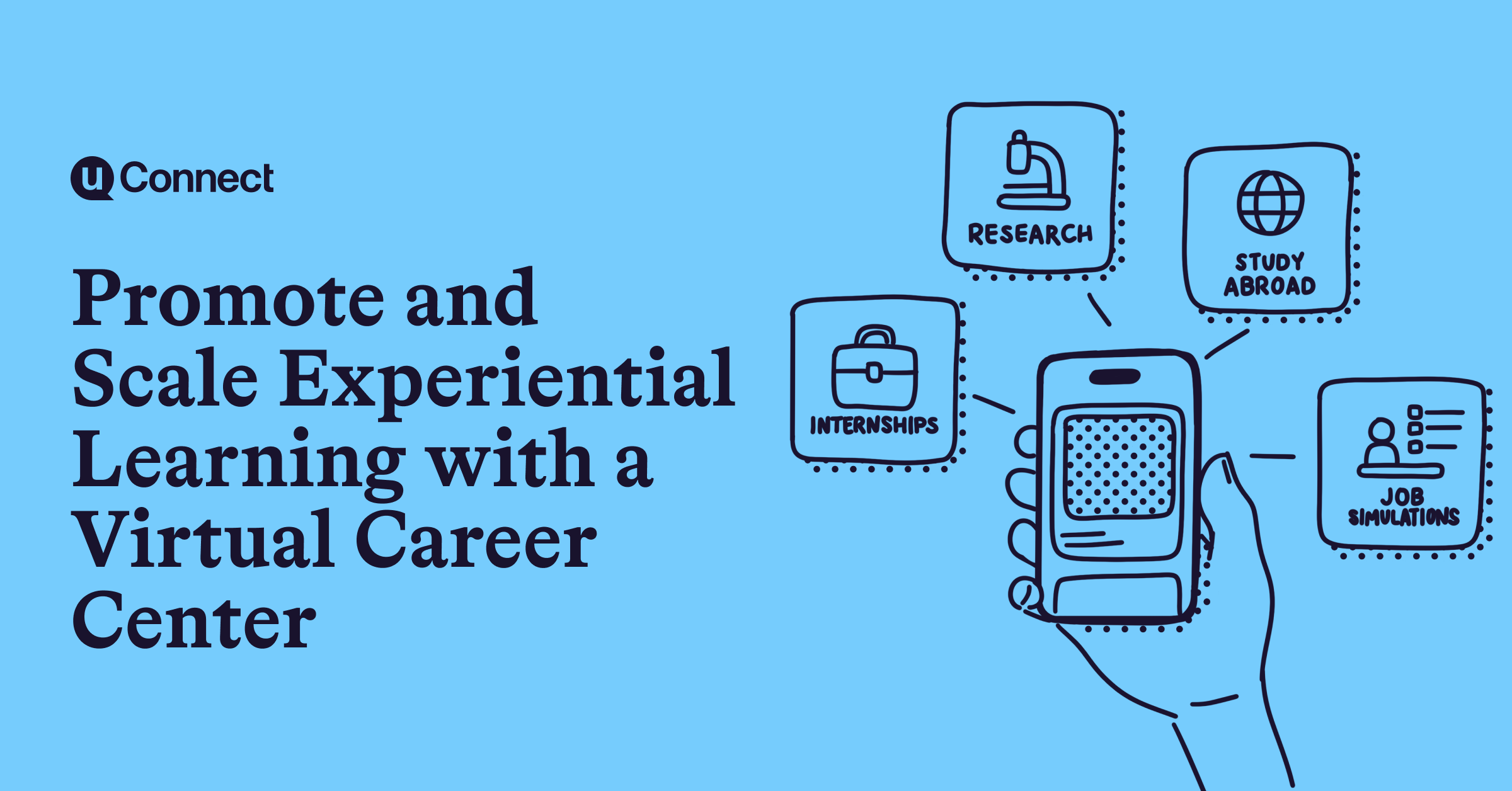Key challenges and focus areas:
1. Supporting job exploration beyond local markets
2. Equipping faculty, staff, and students with scalable career tools
3. Demonstrating outcomes to prospective students and families
4. Creating a culture of shared responsibility around student career success
WIT is a prime example of how institutions can bring Career Intelligence Data to life. By combining labor market trends with graduate outcomes and embedding both across the student journey, they’ve elevated career services into a strategic resource, while making critical data—often hidden away in spreadsheets—accessible to stakeholders all across campus.
Career Intelligence Data is the strategic combination of:
Labor Market Data: The forward-looking signals that reveal current and future demand in the workforce—skills, compensation, hiring trends, top employers, and opportunities by region and industry.
Outcomes Data: The backward-looking, evidence-based results of your institution’s graduates—employment rates, salary levels, job titles, industries, employers, and geographic placements.

One result? In Fall 2024, WIT welcomed their largest incoming class in the institution’s 120-year history (an 11 percent increase over 2023). They also saw their largest group of transfer students since the pandemic and added more than 100 honors program scholars.
“Our students have great career outcomes, and we’re telling their stories—and our story—better,” Amy Sison, Associate Vice President of Enrollment and Dean of Admissions at WIT, said in this article.
With the help of Career Intelligence Data, the WIT career services team has played a key role in telling that story.
The challenge: Scaling impact and visibility for career services
The Boston-based WIT has long had a strong regional identity. But with students increasingly interested in broader job markets, and faculty and leadership seeking to demonstrate real return on investment, the career services team saw an opportunity to do more with data.
Under the leadership of Abbey Pober, Director of Operations in WIT’s Center for Cooperative Education and Career Development (Co-ops and Careers), the team sought to improve access to actionable career data, empower stakeholders across campus, and embed career support into the student journey.
The challenge? A limited view beyond regional job markets, time-consuming one-on-one advising, and disconnected tools that couldn’t keep pace with growing institutional demands.
The solution: A self-serve, scalable virtual toolset powered by real-time data
WIT deployed uConnect’s Labor Market Insights (LMI) and Outcomes Data Visualization (ODV) modules—a combined Career Intelligence Data strategy that enables both forward- and backward-looking analysis. While LMI provides real-time data on current and future workforce trends, ODV helps visualize the success of WIT graduates—bringing employment rates, salaries, top employers, and job titles to life in an accessible, program-specific format.
The LMI module provides real-time data on job trends, salary benchmarks, skill requirements, and top hiring employers. This empowered the WIT team to guide students beyond the Boston area, filling gaps in institutional knowledge and providing data-backed advising for students exploring national job markets.
“We have a stronghold in Boston, but the LMI tool helps us expand our footprint. If a student is looking in Chicago or Austin, we may not have firsthand data but the LMI tool fills that gap.” — Abbey Pober, Director of Operations for Co-ops and Careers at WIT
The LMI and ODV modules have become more than just a resource for the career center. They’re also used by:
- Students for job exploration, resume writing, and salary negotiation
- Faculty to integrate career outcomes into assignments and advising
- Advancement and admissions teams to target new regions and employers
- Alumni to explore career pivots without relying on 1:1 coaching
Implementation: Fast integration with high-impact collaboration
WIT didn’t stop at using these tools internally. They strategically embedded them across their campus ecosystem. Career outcomes and labor market data are featured prominently on:
- WIT main website and program pages
- Their Virtual Career Center (including on career community pages like this one)
- Their prospective student resources
- Internal faculty and staff hubs
By collaborating with the website director and IT, the team used simple iFrame integrations to embed the data directly on academic program pages—making the tools visible and filterable by program, and ensuring prospective students and families could easily see outcomes specific to their intended majors. To support this work, the career services office partnered with the university’s technology services department to cost-share the modules, illustrating a collaborative budgeting model.
“It eliminated manual work, reduced transcription errors, and gave us a real-time way to showcase our results. The data comes directly from the source.” — Abbey Pober
Career Intelligence Data Across the Student Journey
Prospective Students
WIT has embedded career outcomes data directly into admissions and academic program pages, giving families proof of ROI at the exact moment they need it. Enrollment and advancement teams also use LMI to support regional outreach.
Early College (Years 1–2)
Faculty incorporate LMI into first-year courses, like English classes on resource literacy, helping students gain career fluency early on. Students also use LMI to broaden their thinking beyond a single job title or pathway.
Later College (Years 3–4)
Career coaches use labor market data and outcomes together to identify skills gaps and help students build personalized success plans. LMI informs resume content, job searches, and salary negotiation.
Alumni
Because students learned to use the LMI and ODV modules during college, they return to it as alumni to explore career pivots and upskilling opportunities. No appointment needed. This supports scalable, ongoing engagement long after graduation.
A culture of Career Everywhere
WIT’s use of labor market and outcomes data isn’t just tactical—it’s cultural. With career support embedded into classes, websites, and stakeholder conversations across campus, WIT exemplifies the ethos of Career Everywhere.
“Our team is brought into conversations now that we never would have been before. Faculty see this data and come to us to collaborate. Everyone has skin in the game.” — Abbey Pober
As a result, WIT’s career services office isn’t just advising students—it’s informing institutional strategy. Whether supporting accreditation reviews, improving ROI messaging, or enabling data-driven outreach by advancement, the LMI and ODV modules are helping the institution speak with confidence about its value in the world of work.
About Wentworth Institute of Technology
Wentworth Institute of Technology is a private university located in Boston, Massachusetts. Known for its emphasis on experiential learning and strong co-op programs, WIT prepares students for real-world success in engineering, design, technology, and management fields.
Ready to scale your career services and bring Career Intelligence Data to life across campus—just like Wentworth? Fill out the form below to get started.


